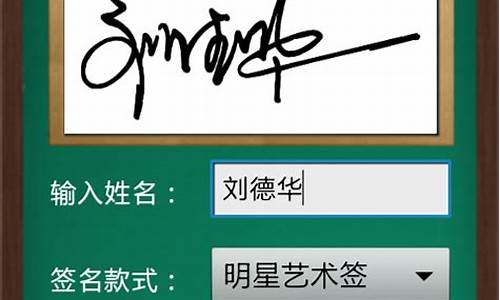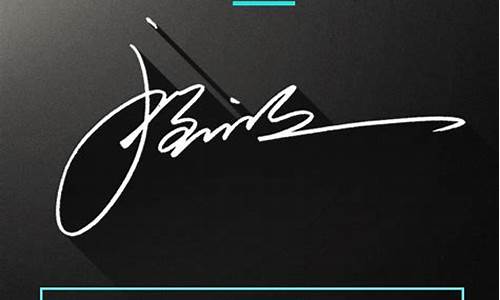您现在的位置是: 首页 > 名人语录 名人语录
句子结构英语七大结构例题解析大全_英语句子结构英语表达
tamoadmin 2024-08-13 人已围观
简介1.英语句型结构及例句2.五种句子结构英语例句3.初中英语句子结构:5种常见句型4.英语句子结构分析研究5.如何分析这个英语句子1. 名词做主语: My school is not far from my house. 2. 代词做主语: We like our school very much. 3. 基数词做主语: Two and two is four. 4. 名词性
1.英语句型结构及例句
2.五种句子结构英语例句
3.初中英语句子结构:5种常见句型
4.英语句子结构分析研究
5.如何分析这个英语句子

1. 名词做主语:
My school is not far from my house.
2. 代词做主语:
We like our school very much.
3. 基数词做主语:
Two and two is four.
4. 名词性或名词化的词、词组或短语:
This is an article.
5. 动名词做主语:
Seeing is believing.
6. 动词不定式做主语:
To do such a job needs more knowledge.
7. 从句做主语:
What I mean is to work harder.
主语的补语:它用在系动词后,是句子的一个基本成分。常用主-系-表结构。
1.I saw her with them, at least, I thought it was her.
我看到她和他们在一起,在最少的时候,至少我认为是她。(her做宾 语,them做介词宾语,her做主语补语)
2.. -- Who broke the vase? --谁打碎了花瓶?
-- Me. --我。 (me做主语补语= It's me.)
3.John hoped the passenger would be Mary and indeed it was she. (she做主语补语)
约翰希望那位乘客是玛丽,还真是她。
谓语[predicate verb]是对主语动作或状态的陈述或说明,指出“做什么”、“是什么”或“怎么样”. 谓语动词的位置一般在主语之后。
谓语由简单动词或动词短语(助动词或情态动词+主要动词)构成,依据其在句中繁简程度可把谓语分为简单谓语和复合谓语两类。不论何种时态,语态,语气,凡由一个动词(或动词词组)构成的谓语都是简单谓语。
谓语动词一般由动词的各种时态来体现。例如:
I (like) walking.我喜欢走路。(一般现在时主动语态)
I (made) your birthday cake last night..昨晚我做好了你的生日蛋糕。 (一般过去时主动语态)
It is used by trellers and business (people all over the world).全世界旅行者和商人都使用它 (一般现在时被动语态)
宾语补足语
在英语中有些及物动词,接了宾语意义仍不完整,还需要有1个其他的句子成分,来补充说明宾语的意义、状态等,称为宾语补足语,简称宾补。
比如说:
I heard Jean singing this morning.
句子中的Jean显然是宾语。但是主语I听到的并不是Jean,而是Jean singing。singing 是句子中的宾语补足语。它和宾语之间是逻辑上的主谓关系,也就是说从逻辑上来讲,是Jean执行了singing的动作。
句子中的singing是现在分词做宾语补足语。能够充当宾补的还有宾语补足语的大致有:不定式,现在分词,过去分词,形容词,副词,介宾短语等。一般情况下,宾补通常紧跟在宾语之后。
比如:
I find learning English difficult.(difficult是形容词做宾补)
I saw the kite up and down. (up and down是副词做宾补)
Tom made the girl cry. (cry是省略不定式符号to的动词不定式)
注意:当感官动词和使役动词,如:
see hear notice watch hear feel observe(感官动词)
make he let(使役动词)
接宾补时,不定式的符号to必须省略。
在help后,不定式可以带to,也可不带。
英语句型结构及例句
英语句子结构分析:
1、主+系+表
You?(主)look(系)?young(表) in that dress.
Food(主)?goes(系)?bad(表) more easily in summer.
She(主)?got?(系)angry?(表)just because of a joke.
2、主+谓
I(主)?got up?(谓)early that morning.
His father(主)?works(谓) in a big company.
She(主)?didn’t go(谓) home until seven p.m.
3、主+谓+宾
I(主)?like(谓)?English(宾) very much.
She(主)?studies(谓)?English?(宾)very hard.
Who(主)?broken(谓)?the window(宾)?
4、主+谓+间接宾语+直接宾语
He(主)?told(谓)?us(间宾)?an interesting story(直宾).
Miss Gao(主)?taught(谓)?us(间宾)?English(直宾) last term.
My father(主)?bought(谓)?me(间宾)?an English-Chinese dictionary(直宾).
5、主+谓+宾+宾语补语
We?(主)should make(谓)our?city?(宾)more and more?beautiful(宾补).
Our teacher(主)?told?(谓)us(宾)?to stay(宾补) here.
The workers(主)?found(谓)?it(宾)?impossible(宾补) to finish the work in two weeks.
五种句子结构英语例句
英语的句子成分有8种,分别是主语(subject)、谓语(predicate)、宾语(object)、表语(predicative)、定语(attribute)、状语(adverbial)、补语(complement)和同位语(ositive)。
学会判断句子成分对以后学习难句和理解文段奠定了基础。英语句子的构成也有其特定的规律,掌握了句子的基本句型、常见句式和词语的习惯搭配,就能写出完整、正确的句子。
一、句子成分和基本句型讲前练指出下列句子中划线部分的句子成分并总结出该句的基本句型结构。1.They he worked for months and even years.成分:主语谓语时间状语句型结构总结:主语+谓语(不及物动词)
2.The film you see on the screen is the product of a huge amount of hard work成分:主语?定语 谓语?表语句型结构总结:主语+系动词+表语?
3.I didn’t understand all of the traditional customs at first.成分:?主语谓语宾语?状语?句型结构总结:主语+谓语(及物动词)+宾语?
4.Traditional festivals teach us a lot about our nation’s history成分:主语 谓语?间接宾语直接宾语?句型结构总结:主语+谓语(及物动词)+双宾语(间接宾语+直接宾语)?
5.Traditional festivals enable usto learn fine Chinese values成分:?主语谓语宾语宾语补足语句型结构总结:?主语+谓语+复合宾语(宾语+补语) ?小结:从以上的练习中可知英语中的句子成分包括:主语,谓语,宾语,表语,定语,状语,宾语补语
6.He was seenplaying basketball?on the playgroundyesterday.(现在分词短语作主语补足语)
二、句子成分和基本句型精讲
(一)、句子成分
1、主语:?说明句子所谈的是:“什么人”或“什么物”,主语通常由名词、代词或相当于名词的词或短语充当。EG:Lucylikes her new car very much.?露西喜欢她的新车。名词作主语Hegoes to and from schoolby bike every day.他每天都起得很早。(代词作主语)To learn English wellis a challenge.学好英语是一项挑战性工作。不定式短语作主语
2、谓语:?说明主语“做什么”、“是什么”或“怎么样”,英语中谓语只能用动词充当。例如:Weworkhard.我们努力工作。The boy?caught?a bird.?那个男孩逮住一只鸟。Heislike his father.?他像他父亲。注意:介词不能作谓语,必须与be动词连用,构成系表结构,一起作谓语。谓语和主语在人称和数方面必须保持一致。EG:Music isthe utmost pleasure in life.音乐是人生最大的快乐。AsI take?each bite,?the sweet and mild flour of the red bean filling?slowly?fills?my mouth.
3、宾语:?宾语是动作的对象。由名词、代词或相当于名词的词或短语充当,说明主语做?“什么”。EG:Tom boughta story-book.汤姆买了一本故事书。名词作宾语I sawhim?yesterday.?昨天我看到他了。代词宾语He decidedto run away from home.?他决定离家出走。不定式短语作宾语注意:宾语分为直接宾语和间接宾语:有些及物动词可以有两个宾语,一个指人,一个指物,指人的叫作间接宾语,指物的叫直接宾语;合称双宾语。EG:I boughtmy sona box of Mark pens?last night.?他给了我一些墨水。间接宾语?直接宾语Our teacher toldusaninteresting story.?老师给我们讲了一个有趣的故事。间接宾语直接宾语
4、表语:说明主语“是什么”或“怎么样”;与连系动词一起构成谓语,表语由名词、形容词、或相当于名词或形容词的词或短语等充当;用在系动词后面。EG:I he been an English teacher since I graduated from university.我的姐姐是一名护士。名词作表语Terry seems in low spirits today.特瑞今天好像情绪低落。介词短语Tom’s dream has become true already.?汤姆的梦想已经实现。形容词作表语
5、定语:修饰名词或代词的成分,除形容词外,还有名词、代词、数词、介词短语或相当于形容词的词或短语都可以作定语。EG:After years ofhard?work,his career began to take.多年的努力工作之后,他的事业开始腾飞。形容词作定语Are these studentsyour?classmates?这些学生是你班的吗?形容词性物主代词作定语Winter is the coldest seasonof the year.冬天是一年中最冷的季节。介词短语作定语The building to be built next year will be our new teaching building.明年将要修建的建筑物将是我们的新教学楼。不定式作定语The peoplehere?are very friendly.这里的人们非常友好。副词作定语注意:单个形容词作定语时通常放在被修饰的词之前。而介词短语、不定式短语或副词等作定语时则放在被修饰的词之后。
6、状语:?修饰动词、形容词、副词,或修饰全句的成分叫状语。作状语的主要是副词和介词短语或相当于副词的词或短语等。EG:Jack runs veryfast.?杰克跑得很快。副词作状语All these clothes are madeby hand.shua。所有的这些衣服都是手工制作的。介词短语作状语She will arrive in Shanghaion Friday.?她将于星期五到达上海。介词短语作状语To pass the weekly test,he is studying very hard.?为了通过周考,他正在努力学习。不定式短语状语
7、宾语补足语:?有些及物动词的宾语后边还需要有一个成分来说明宾语的情况,意思才能够完整,这个成分叫宾语补足语。宾语和补足语构成复合宾语。EG:They always call?me Lao Yang.宾语宾语补足语?名词做宾补You must keep?the roomclean and tidy.宾语?宾语补足语形容词作宾补Mr. Yang invitedme to visit his new house in Huaihua.宾语宾语补足语不定式作宾补I hadmy old housepaintedlast week.宾语?宾语补足语We found?the girls in our classplaying gameson the playground ten minutes ago.宾语?宾语补足语现在分词作宾补
8、主语补足语一个句子有时不足以表达完整的意义,需要再添加一个成分用来补充说明主语的状态,特征和性质,这个成分就是主语补足语。常用来做补语的成分有形容词,名词,数词,不定式,分词和介词短语。Tired and sleepy, I went to bed.宾语补足语所在句子变成了被动语态后,宾语补足语就成了主语补足语。例句:I saw the kiteup and down.(up and down是副词做宾补)The kite was seenup and down.up and down是副词做主补)
9、同位语?同位语对前面的名词或代词作进一步的解释和补充,说明它指的是谁、或者是什么。同位语大多数时候由名词来充当,形容词、代词、数词和从句也可以作同位语。Youchildren?must learn to say please and thank you.你们这些孩子必须学会说请和谢谢。I heard the newsthat our team had won.我听说我们队赢了。句子成分巧记歌诀主谓宾表定状补七种成分记清楚句子主干主谓宾(表)枝叶成分定状补定语修饰主宾表宾语之后常有补主谓人称数一致状语位置最灵活考点对练1:指出下列句子中划线部分的成分。(将划线部分的句子成分写在横线上)
1.Jack and Tom are doingtheir homework?now.宾语?
2.Bettyplantedmany trees and flowerson her farm?谓语 ?
3.The boy under the tree isa policeman.表语 ?
4.We went on a visit to the Great Walllast week?状语
5.Yangjing was mybest?friend in my childhood.?定语?
6.Healways?walks in the park after supper with his wife.状语?
7.Mary asked meto help her?yesterday.?宾语补足语
8.I boughtmy girlfriend a gold ringon her birthday.?双宾语
9.Mr. Weiremains?a doctor.谓语(系动词)
10.The boys and girlsseemed excited?when they heard the news.系表结构
三、简单句的基本句型简单句:由一个主语(或并列主语)和一个谓语(或并列谓语)所构成的句子。简单句分为5种基本句型:
1.主语+谓语(主语?+不及物动词)例1:My little sister can swim? very well.?我妹妹游泳游得很好。主语谓语(不及物动词)例2:The planehas already arrived.?飞机已经抵达。主语?谓语2.主语+谓语+宾语(主语+及物动词+宾语)例3:The poor passengers?on the real Titanic?saw the tip of the iceberg.主语谓语宾语泰坦尼克号上可怜的乘客们看到了冰山的顶部。例4:The company makes films?.?这家公司制作**。主语.谓语?宾语例5:Stanley?bought a flat? last year. ?Stanley去年买了套公寓。主语谓语宾语3.主语+系动词+表语(主语+连系动词+表语)例6:My mother is a scientist.?我母亲是个科学家。主语?谓语表语例7:She looks young.?她看上去很年轻。主语谓语表语例8:The cake tastes? very?yummy.?这蛋糕尝起来很美味。主语?谓语?表语4.主语+谓语+双宾语(主语+及物动词+间接宾语+直接宾语)例9:My mother bought me a dictionary? yesterday. ?我母亲昨天给我买了本字典。主语?谓语?间接宾语?直接宾语例10:Can you give me the math book 你能给我那本数学书吗?谓语?主语?谓语?间接宾语?直接宾语例11:Will you tell us something about your school life?谓语主语谓语间接宾语?直接宾语你给我讲讲你们的学习生活,好吗?5.主语+谓语+复合宾语(主语+及物动词+宾语+补语)例12:We must keep our classroom clean and tidy.?我们必须保持教室干净、整洁。主语谓语宾语宾语补足语例13:My mother asks me to speak English as much as possible.主语?谓语?宾语?宾语补足语我母亲要求我尽可能多地讲英语。例14:I heard her singing hily?in the room just now.主语谓语?宾语?宾语补足语刚才我听到她在房间里高兴地唱着歌。考点对练2:指出下列句子的基本类型1.主语+谓语2.主语+谓语+宾语3.主语+系动词+表语4.主语+谓语+双宾语(间宾?+直宾?)5.主语+谓语+复合宾语(宾?+?宾补)
1.Plants need water and sun.?主+?谓+宾
2.The flowersare so fresh and beautiful.?主?+?系?+?表
3.The sun rises in the east.?主?+?谓4.He ge me some flowers.?主?+?谓?+间宾?+直宾?5.We should keep the classroom clean and tidy.?主?+?谓?+?宾?+?宾补6.Many animals live in trees.主?+?谓7.Her mother looks very young.?主?+?系?+?表8.She teaches us English.主?+?谓?+间宾?+直宾?9.The children are jumping and laughing hily.?主?+?谓10.Our teacher asked us to talk about thequestions in pairs.主?+?谓?+?宾?+?宾补?11. He often tells me some interesting stories.?主?+?谓?+间宾?+直宾12.The students must keep their eyes closed.?主? +?谓?+?宾?+?宾补?四、考点应考技巧1、在语法填空题中,要注意分析句子成分,方能判断空格中应该填什么词性。2、在阅读英语文章遇到长句难句时,要不断培养分析句子成分,抓住句子的主干部分(主谓宾),方能理解好句子含义。
五、句子成分和基本句型考点精练(一)、划出下列高考真题中的句子的主()谓()宾/表语()(有从句时,只划出主句的主谓宾/表)。
The hostelsin Rome?offer a bed?in a dorm room for around $25 a night.来自2021年新高考I卷
2.Unfortunately,it took the explorers and the settlers?who followed?only a few decades形式主语?谓语间接宾语直接宾语to decimate a large part of these resources.来自2021年新高考I卷真正的主语
3.Under this Act,all waterfowl(水禽)hunters?16 years of age and over?must?annually?purchase and carrya Federal Duck Stamp.来自2021年新高考I卷翻译:根据该法案,所有16岁及以上的水禽猎人必须每年购买并携带联邦鸭邮票。4.Research has shown that emotional skills may contribute to some of these qualities.来自2021年新高考I卷?从句作宾语(宾语从句)翻译:研究表明,情感技能可能有助于提高这些品质
5.The abilityto accurately understand how others are feeling?may be used?by a doctor to find how best to help her patients.?来自2021年新高考I卷翻译:准确理解他人的感受的能力可能会被医生用来找到如何最好地帮助她的病人。解析:要理解好这句话还要理解好句式“be used to do sth ”的含义,句式表示“被用来做某事”。6.Take a viewis a desirable annual competition?for photographers from all comers of the UK and beyond.?来自2021年全国甲卷?此句是主系表结构翻译:《取一个观点》对于所有来者的英国和其他地区的摄影师是一个让人渴慕的年度竞争。解析:此句是省略句:beyond?后面省略了?all corners of the UK.
7.Officialsat Port Lympne?were delighted?with the new arrival, especially as black rhinos are主语谓语(系动词)表语介词宾语known for being difficult to breed in captivity (圈养).?来自2021年全国甲卷翻译:林普恩港的官员们对新到来的到来感到高兴,尤其是因为黑犀牛以圈养繁殖(圈养)而闻名。解析:这里as?引导原因状语从句。8.Without my beloved beaches and endless blue-sky days,I felt at a loss and out of place.来自2021年全国甲卷?主语谓语?介词短语作表语翻译:没有我心爱的海滩和无尽的蓝天,我感到不知所措和不自在。解析:without.......一部分是介词短语作状
9.Southbank,at an eastern bend in the Thames,?is the center of British skateboarding,?where the continuous crashing of skateboards left your head ringing.来自2021年全国甲卷翻译:南岸位于泰晤士河东部的一个拐弯处,是英国滑板运动的中心,滑板运动的不断碰撞让你会摇头。解析:此句主干是主系表结构。Where引导的是非限制性定语从句补充说明the center.?而at an eastern bend in the Thames部分是作主语补足语,补充说明Southbank的地理位置
10.I he treledback several times since, most recently this past spring.来自2021年全国甲卷翻译:从那以后我去过几次,最近是去年春天。解析:此句是主谓结构,没有宾语,因为trel是不及物动词。
请点击输入描述
请点击输入描述
初中英语句子结构:5种常见句型
五种句子结构英语例句如下:
1、主语+谓语(及物动词)+宾语的句型。在这类句型中,谓语是可以带宾语的及物动词。比如:Helike learningEnglish.他喜欢学习英语。 This machine needsrepairing.这台机器需要修理。Theyhelefttheclassroom.他们已经离开教室了。
2、主语+谓语+间接宾语+直接宾语的句型。在这类句型中,谓语动词是可以带两个宾语的及物动词。比如:Her father bought her fresh fruit.爸爸给她带新鲜的水果。Givemeacup teaplease请给我一杯茶。
注意在这类句型中,有时候我们会把直接宾语和间接宾语对调,这时间接宾语前面要加上一个介词。比如Her father bought a toyforher爸爸给她带了一个玩具 Give scup coffee to meplease.请给我一杯咖啡。
3、主语+谓语动词+宾语+补语的包型。 在 这类句型中,谓语动词是及物动词。这类及物动词除了需要一个宾语以外,换需要一个名词、动词不定式、形容词、副词或者分词来对宾语进行补充说明,才能表达完整。比如:Mother asked me to clean thebedroom.妈妈让我去打扫卧室,The news made ucited.这个消息让我们振奋。
英语句子结构分析研究
句子 是 文章 的组成部分,只有组成了句子才有真正的意义。在英语 文章阅读 中,语法归根结底是为我们读懂文章而服务的,只要能够掌握基本的语法规律,无障碍的读懂复杂的句子,语法的任务就圆满的完成了。下面我就介绍5中初中英语句子机构常见句型:
一、Subject (主语) + Verb (谓语)
这种句型中的动词大多是不及物动词,所谓不及物动词,就是这种动词后不可以直接接宾语。常见的动词如:work, sing, swim, fish, jump, arrive, come, die, disear, cry, hen等。如:
1) Li Ming works very hard.李明学习很努力。
2) The accident hened yesterday afternoon.事故是昨天下午发生的。
3)Spring is coming.
4) We he lived in the city for ten years.
二、Subject (主语) + Link. V(系动词) + Predicate(表语)
这种句型主要用来表示主语的特点、身份等。其系动词一般可分为下列两类:
(1)表示状态。这样的词有:be, look, seem, smell, taste, sound, keep等。如:
1) This kind of food tastes delicious.这种食物吃起来很可口。
2) He looked worried just now.刚才他看上去有些焦急。
(2)表示变化。这类系动词有:become, turn, get, grow, go等。如:
1) Spring comes. It is getting warmer and warmer.春天到了,天气变得越来越暖和。
2) The tree has grown much taller than before.这棵树比以前长得高多了。
三、Subject(主语) + Verb (谓语) + Object (宾语)
这种句型中的动词一般为及物动词, 所谓及物动词,就是这种动词后可以直接接宾语,其宾语通常由名词、代词、动词不定式、动名词或从句等来充当。例:
1) He took his bag and left.(名词) 他拿着书包离开了。
2) Li Lei always helps me when I he difficulties. (代词)当我遇到困难时,李雷总能给我帮助。
3) She plans to trel in the coming May Day.(不定式)她打算在即将到来的“五一”外出旅游。
4) I don?t know what I should do next. (从句)我不知道下一步该干什么。
注意:英语中的许多动词既是及物动词,又是不及物动词。
四、Subject(主语)+Verb(谓语)+ Indirect object(间接宾语)+Direct object (直接宾语)
这种句型中,直接宾语为主要宾语,表示动作是对谁做的或为谁做的,在句中不可或缺,常常由表示“物”的名词来充当;间接宾语也被称之为第二宾语,去掉之后,对整个句子的影响不大,多由指“人”的名词或代词承担。引导这类双宾语的常见动词有:buy, pass, lend, give, tell, teach, show, bring, send等。如:
1) Her father bought her a dictionary as a birthday present.她爸爸给她买了一本词典作为生日礼物。
2)The old man always tells the children stories about the heroes in the Long March.
老人经常给孩子们讲述长征途中那些英雄的 故事 。 上述句子还可以表达为:
1)Her father bought a dictionary for her as a birthday present.
2)The old man always tells stories about the heroes to the children in the Long March.
五、Subject(主语)+Verb (动词)+Object (宾语)+Complement(补语)
这种句型中的“宾语 + 补语”统称为“复合宾语”。宾语补足语的主要作用或者是补充、说明宾语的特点、身份等;或者表示让宾语去完成的动作等。担任补语的常常是名词、形容词、副词、介词 短语 、分词、动词不定式等。如:
1)You should keep the room clean and tidy. 你应该让屋子保持干净整洁。(形容词)
2) We made him our monitor.(名词)我们选他当班长。
3) His father told him not to play in the street.(不定式)他父亲告诉他不要在街上玩。
4)My father likes to watch the boys playing basketball.(现在分词)
5) Yesterday I had a picture taken with two Americans.(过去分词)
● 常见的动词有: tell, ask, advise, help, want, would like, order, force, allow等。
● 注意:动词he, make, let, see, hear, notice, feel, watch等后面所接的动词不定式作宾补时,不带to。如:
1) The boss made him do the work all day.老板让他整天做那项工作。
2) I heard her sing in the next room all the time last night.昨天晚上我听见她在隔壁唱了一个晚上。
如何分析这个英语句子
#英语# 导语随着全球化与多元文化的发展,英语正跻身为一种国际语言被广泛使用。以下是由 精心收集了英语句子结构,供大家欣赏学习!
篇一英语句子结构分析研究
一、主语(subject): 句子说明的人或事物。
The sun rises in the east. (名词)
He likes dancing. (代词)
Twenty years is a short time in history. (数词)
Seeing is believing. (动名词)
To see is to believe. (不定式)
What he needs is a book. (主语从句)
It is very clear that the elephant is round and tall like a tree.
(It形式主语,主语从句是真正主语)
二、谓语(predicate):说明主语的动作、状态和特征。
We study English.
He is asleep.
三、表语(predicative):系动词之后的成分,表示主语的性质、状态和特征。
He is a teacher. (名词)
Seventy-four! You don’t look it. (代词)
Five and five is ten. (数词)
He is asleep. (形容词)
His father is in. (副词)
The picture is on the wall. (介词短语)
My watch is gone / missing / lost. (形容词化的分词)
To wear a flower is to say “I’m poor, I can’t buy a ring. ” (不定式)
The question is whether they will come. (表语从句)
常见的系动词有: be, sound(听起来), look(看起来), feel(摸起来),smell(闻起来),
taste(尝、吃起来), remain(保持,仍是), feel(感觉) ….
It sounds a good idea.
The sound sounds strange.
Her voice sounds sweet.
Tom looks thin.
The food smells delicious.
The food tastes good.
The door remains open.
Now I feel tired.
三、宾语:
1)动作的承受者——动宾
I like China. (名词)
He hates you. (代词)
How many do you need? We need two. (数词)
We should help the old and the poor.
I enjoy working with you. (动名词)
I hope to see you again. (不定式)
Did you write down what he said? (宾语从句)
2)介词后的名词、代词和动名词——介宾
Are you afraid of the snake?
Under the snow, there are many rocks.
3) 双宾语——间宾(指人)和直宾(指物)
He ge me a book yesterday.
Give the poor man some money.
篇二英语句子结构分析研究
一、宾补:对宾语的补充,全称为宾语补足语。
We elected him monitor. (名词)
We all think it a pity that she didn’t come here. (名)
We will make them hy. (形容词)
We found nobody in. (副词)
Please make yourself at home. (介词短语)
Don’t let him do that. (省to不定式)
His father advised him to teach the lazy boy a lesson. (带to不定式)
Don’t keep the lights burning. (现在分词)
I’ll he my bike repaired. (过去分词)
二、主补:对主语的补充。
He was elected monitor.
She was found singing in the next room.
He was advised to teach the lazy boy a lesson.
三、定语:修饰或限制名词或代词的词、词组或句子。
Ai Yanling is a chemistry teacher.(名词)
He is our friend. (代词)
We belong to the third world. (数词)
He was advised to teach the lazy boy a lesson.(形容词)
The man over there is my old friend.(副词)
The woman with a baby in her arms is my sister. (介词)
The boys playing football are in Cla2. (现在分词)
The trees planted last year are growing well now. (过去分词)
I he an idea to do it well. (不定式)
You should do everything that I do. (定语从句)
四、状语:用来修饰v., adj., adv., or 句子。 表示时间、地点、原因、目的、结果、程度、条件、方式和让步。
(以下例句按上述顺序排列) I will go there tomorrow.
The meeting will be held in the meetingroom.
The meat went bad because of the hot weather.
He studies hard to learn English well.
He didn’t study hard so that he failed in the exam.
I like some of you very much.
If you study hard, you will pathe exam.
He goes to school by bike.
Though he is young, he can do it well.
篇三英语句子结构分析研究
1、简单句
简单句,即只有一个主谓结构的句子。除了特殊情况,英语句子中都有主语、谓语(或表语),有时候还有宾语;而且除了倒装句等特殊句型,一般情况下,主语、谓语、宾语的先后顺序是固定的,不可能宾语跑到谓语前面,或者谓语跑到主语前面。目前很多语法书都把英语的简单句归纳为五种基本句型。实际上,英语简单句还可以简化为三种形式:
主语 + 谓语(及物动词) + 宾语;I hate grammar.
主语 + 谓语(不及物动词); Grammar sucks.
主语 + 系动词 + 表语 Grammar is hell.
所以,我们在阅读句子的时候,不管句子有多长,不管是并列句还是复合句,都必须首先分清各句中的主语、谓语(或表语),有的句子中还包括宾语。因为主语、谓语、宾语中英语句子的主干,抓住了句子的主干,句子的基本意思就清楚了。
2、并列句
并列句就是两个或以上的简单句,由表示并列关系的连词或标点符号连接而成。常见的连词:and, not only...but also, neither...nor... or, either...or... otherwise,but, yet, while, so, for等。阅读中遇到并列关系的句子,一般情况下是以连词为界限,将句子分成前、后几个部分,并分别来分析,各句的意思一般可以单独理解,最后将各句合并即可。
I hate grammar, / while he loves it. (以while为界,可分为前后两个小句子)
3、 主从复合句
主从复合句即是复杂句,它也是由两个以上的句子构成。与并列不同的是,各分句之间的意思是紧密相连的,所以我们不能简单地把各个句子拆开来看,而必须将各分句综合起来进行理解。有时候,分句里面有可能还包含分句。
说到从句,我们还要介绍一下英语中的三大从句:名词性从句,形容词性从句和副词性从句。三大从句之下又包括纷繁复杂的从句形式:
名词性从句:主语从句,宾语从句,表语从句, 同位语从句
形容词性从句(定语从句):限制性,非限制性
副词性从句(状语从句):时间,地点,原因,条件,目的,让步,方式,结果
看到这里,可能有些同学又会产生抵触情绪了,其实这些细致的划分我们可以跳过,对于具体句子中的从句如何解决其实很简单,你只需知道从句做什么成分就可以了,从句做什么成分,就是个什么功能的从句。
The sad thing is that the ugly man with a lot of money chooses living alone. (表语)
What the ugly man chooses is living alone.(主语)
We all know that the ugly man chooses living alone.(宾语)
The thing that the ugly man with a lot of money chooses living alone was known to everyone. (同位语)
The ugly man who has a lot of money chooses living alone.(定语)
Although the ugly man has a lot of money, he chooses living alone.(状语)
在阅读这样的复杂句的时候,首先要找出主句或从句从哪儿开始,到哪儿结束,首先理解主句的意思,最后再把从句的内容与主句综合起来。
介绍完句子结构,就该说说复杂句子的解决方法了,那就是优先提取主干法。这种方法顾名思义就是先把句子的主干提取,因为主干是句子的精髓所在,然后再看其他补充或修饰的成分。
One of the results of the conflict between the two factions was that [ what in previous years had been referred to as the "American", "native", or, occasionally, "New York" school (---the most representative school of American art in any genre--- ) 主语从句] ( had by 1890) was firmly established in the minds of critics and public alike as the Hudson River school. 表语从句
首先找到句子主干成分:"One of the results was..."很明显的主系表结构,that 引导的显然是个表语从句,表语从句中又有一个由What引导的主语从句,主干结构是"...was firmly established." 最后再加上修饰成分,句子就很容易分析了,也可以轻而易举的翻译并理解了:两个派别斗争的结果之一是:直到1890年,这个曾经被称作"美国的"、"本土的"、或者偶尔被称作是"纽约的"美国艺术题材中最有代表性的学派,以哈德逊河学派命名被稳固的建立在批评家和公众的思想之中了。
优先提取主干是一个很有效地方法,如果我们具备了基本的句子结构知识,了解了句子的成分构成,先提取主干,抓住句子精髓,再看从句和其他部分,理清各个部分之间的关系,任何复杂的句子也就迎刃而解了。
英语的句子成分说简单也简单,说难也难,主要也还是看你对于句子成分的认知.我先给你一些简单的知识帮助
英语句子结构
英语句子成分结构详解
一、英语语句基本结构分析:
(一)主谓宾结构:
1、主语:可以作主语的成分有名词(如boy),主格代词(如you),数词,动词不定式,动名词等.主语一般
在句首.注意名词单数形式常和冠词不分家!
eg: The boy comes from America.
He made a speech.
Tow and tow is four.
To be a teacher is my dream.
Doing a research is a necessary step of covering a story.
2、谓语:谓语由动词构成,是英语时态、语态变化的主角,一般在主语之后.谓语可以是不及物动词(vi.)没
有宾语,形成主谓结构,
eg:We come.
Many changes took place in my home town.
注(以下这些词是不及物动词:表发生、出现的,如:take place, ear, hen, break out; 表来、去,如:com









